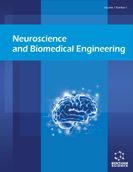Abstract
Functional magnetic resonance imaging (fMRI) technology can be implemented to infer brain activities consistently shared by a population or to identify their differences between populations. There are numerous studies that investigated the anatomical and functional connectivity of the network based on group-analysis. Here, the virtual-typical-subject (VTS) group-analysis methods of restingstate fMRI based on Bayesian network (BN) were investigated. There are three types of VTS-based methods: principal component analysis method (PCA-based), average method (AVE-based) and concatenate method (CAT-based). Sets of simulated data were constructed to test the robustness and performance of these VTS methods. The results from simulation demonstrated that the performance and robustness of AVE-based and CAT-based method was superior to that of the PCA-based method. Compared with CAT-based method, AVE-based method has higher stability, while the CAT-based method showed a better performance for different coefficient matrix of simulated data. Finally, the BN group-analysis (AVE-based and CAT-based) methods were applied to infer effective brain connectivity from real fMRI data. The results were consistent to previous study and demonstrated the validity of group-analysis method.
Keywords: Bayesian network, effective connectivity, fMRI, group-analysis, resting-state, virtual typical subject (VTS).
Graphical Abstract
 4
4

